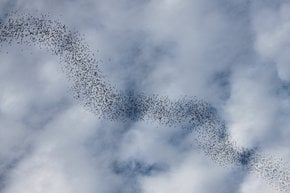Cicada Mania in Midwest 2026
A billionth population of American cicadas come out during final weeks in their lives to rejoice in a huge mating par
Best time: May–mid-June
Magicicada is a unique species that lives only in the United States, mostly in the eastern part, and is distinguished with bulging red eyes. They live in broods about 30 cm under the ground and crawl out just once in 13 or 17 years in order to mate, lay eggs and die. When they do, it looks incredible—tens of billions of tiny insects produce such a great noise that it overbears the sound of a plane flying above and perhaps even a rock concert.
The mysterious natural performance occurs under a single vital condition—the ground temperature has to be 18 °C. The action begins at night,—one by one they emerge from beneath. Endless swarms climb up tree trunks where they are about to lose the shells and free out their delicate wings. A small insect is only 2.5 cm long. Still, they are so numerous that if you put them in a line head to tail, that chain could reach to the Moon and back.
One might fear of such a mass invasion, but in fact cicadas are harmless. The worst they can do is to spoil the seedlings or bushes. Actually, these are them who are in danger—many will become meal for local wildlife. Those who survive, and it's still billions, will finally mate two or three weeks later. That's the peak of the whole racket—when males cry frantically calling females for sex.
Afterwards, each female lays hundreds of eggs in tree trunks concavities. Gradually all noises fade away, cicadas die one after another, and billions of tiny corpses are lying in the decay. Sad, but soon a new generation is hatching from the eggs. They are going to drop down to the ground and instinctively burrow themselves away for the next 13 or 17 years.
Overall, the USA numbers 15 broods of Magicicadas scattered all over the country. Each brood reappears every 13 or 17 years. It means cicada mania is observed every year, just in different locations. In southern states, it starts in early May, whereas in the north—in late May or early July—all depends on the ground temperature. It's possible to live in the area, and still miss the frenzy. In the Midwest, Magicicadas can be frequently observed at Big Foot Beach State Park at Lake Geneva, Wisconsin (1 hour from Milwaukee), and Moraine Nature Preserve in Indiana and nearby Des Plaines River Trail, Illinois, You can see them at Morton Arboretum at Lisle, Illinois, as well as at Battelle Darby Creek Park in Ohio. If you plan to witness the massive insects overrun, check Magicicada brood chart provided on the official website by the link below.






































































